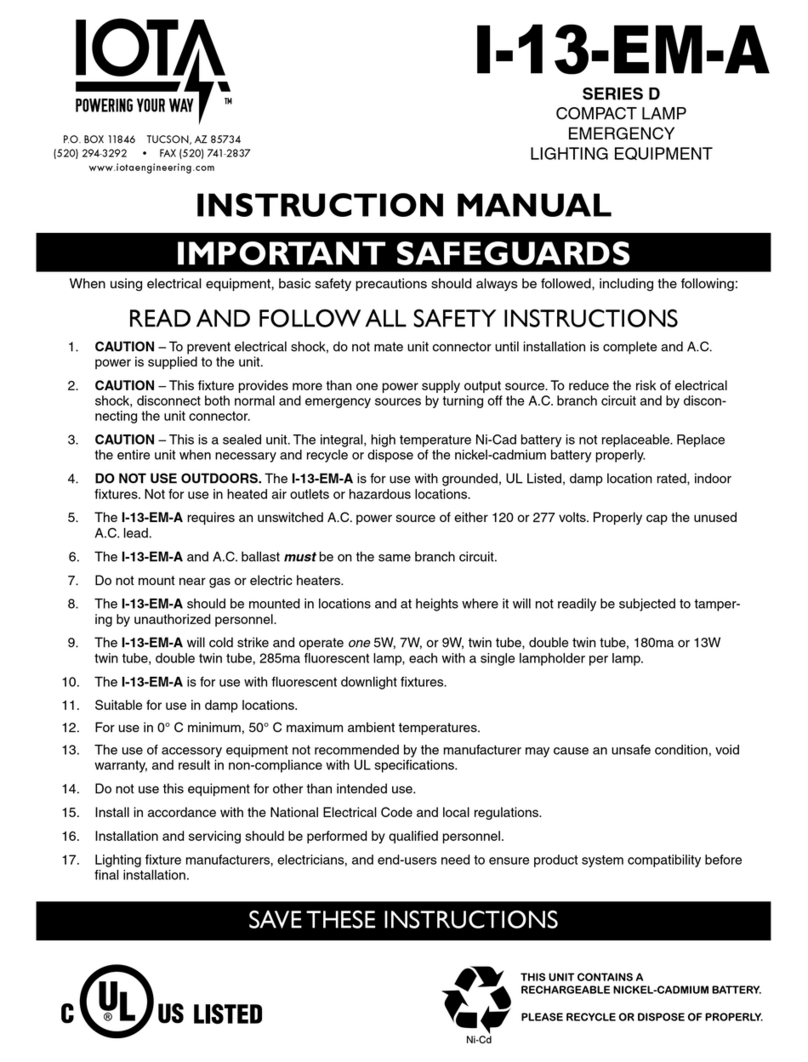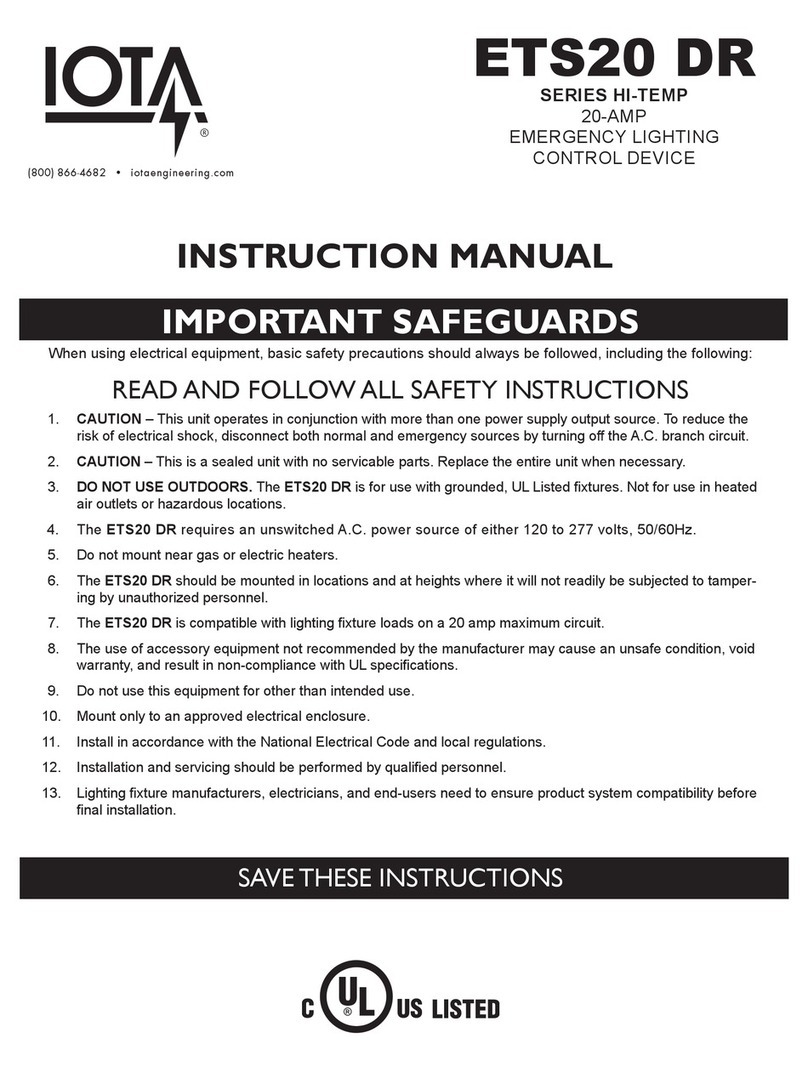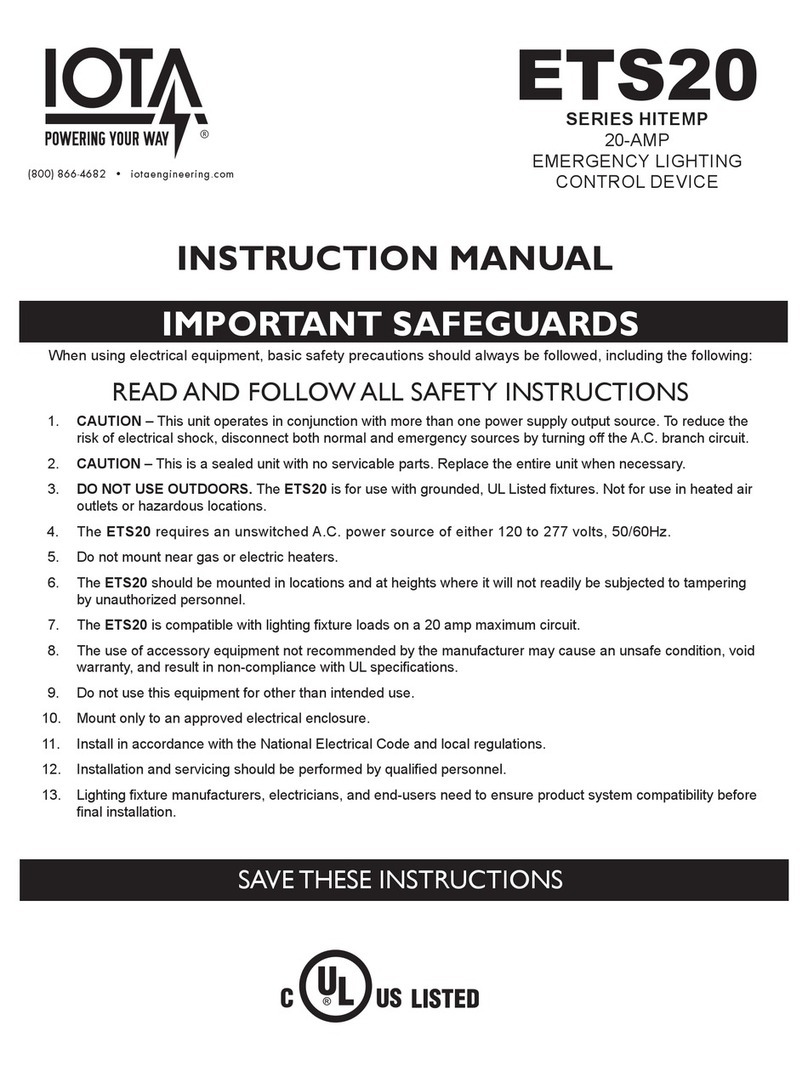
114062B System Users Manual
C H A P T E R 2
ENVIRONMENT
Make sure the environment is a clean, cool, dry place with normal ventilation.
Storage Temperature
Store the batteries (in the system or battery cabinet) at -18 to 40°C (0 to 104°F). Batteries
have a longer shelf life if they are stored below 25°C (77°F). Keep stored batteries fully
charged. Recharge the batteries every 90–120 days. The system or battery cabinet without
batteries may be stored at -20 to 70°C (-4 to 158°F).
Ventilation
The air around the unit must be clean, dust-free, and free of corrosive chemicals or other
contaminants. Do not place the system or batteries in a sealed room or container.
Operating Temperature
System can operate from 20° to 30°C (68° to 86°F) and up to 95% relative humidity. The
batteries’ service life is longer if the operating temperature stays below 25°C (77°F).
Batteries
The temperature should be near 25°C (77°F) for optimum battery performance. Batteries are
less efficient at temperatures below 18°C (65°F), and high temperatures reduce battery life.
Typically, at about 35°C (95°F), battery life is half of what it would be at a normal
temperature of 25°C (77°F). At about 45°C (113°F), battery life is one-fourth of normal.
Make sure that heaters, sunlight, air conditioners, or outside air vents are not directed
toward the batteries. These conditions can make the temperature within battery strings vary,
which can cause differences in the batteries’ voltages. Eventually, these conditions affect
battery performance.
If the batteries are not in the system, remember that the batteries should be installed as
close as possible to the unit to reduce DC wiring costs and improve battery performance.
Do not allow tobacco smoking, sparks, or flames in the system location because hydrogen is
concentrated under the vent cap of each cell of the battery. Hydrogen is highly explosive,
and it is hard to detect because it is colorless, odorless, and lighter than air.
Every type of battery can produce hydrogen gas, even sealed maintenance-free batteries.
The gas is vented through the vent caps and into the air, mainly when the unit is charging
the batteries. The batteries produce the most hydrogen when maximum voltage is present in
fully charged batteries; the batteries do not produce hydrogen during float charging. The
amount of current that the charger supplies to the batteries (not the battery ampere-hour)
determines how much hydrogen is produced.






























